Bust of Sabina
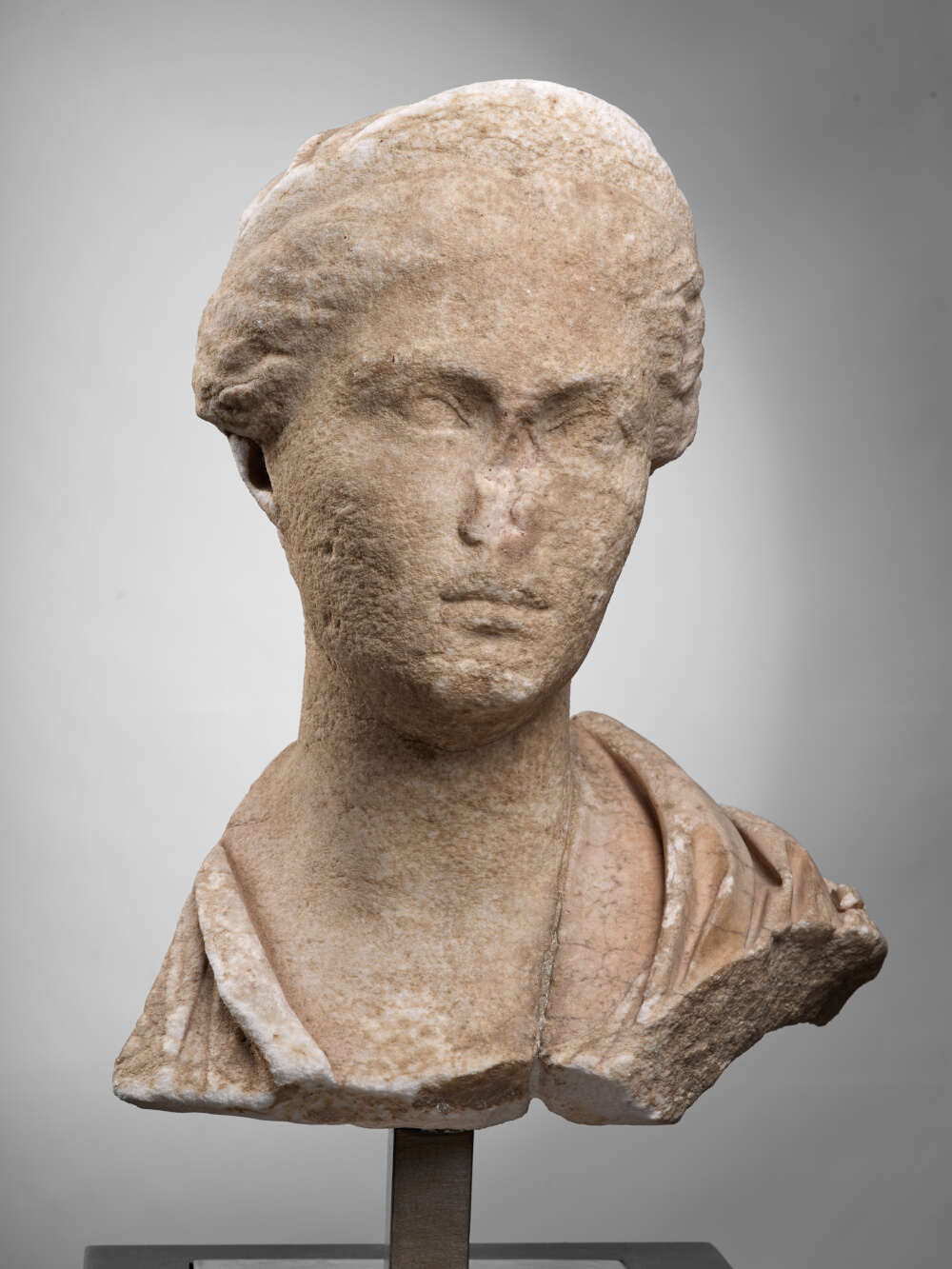
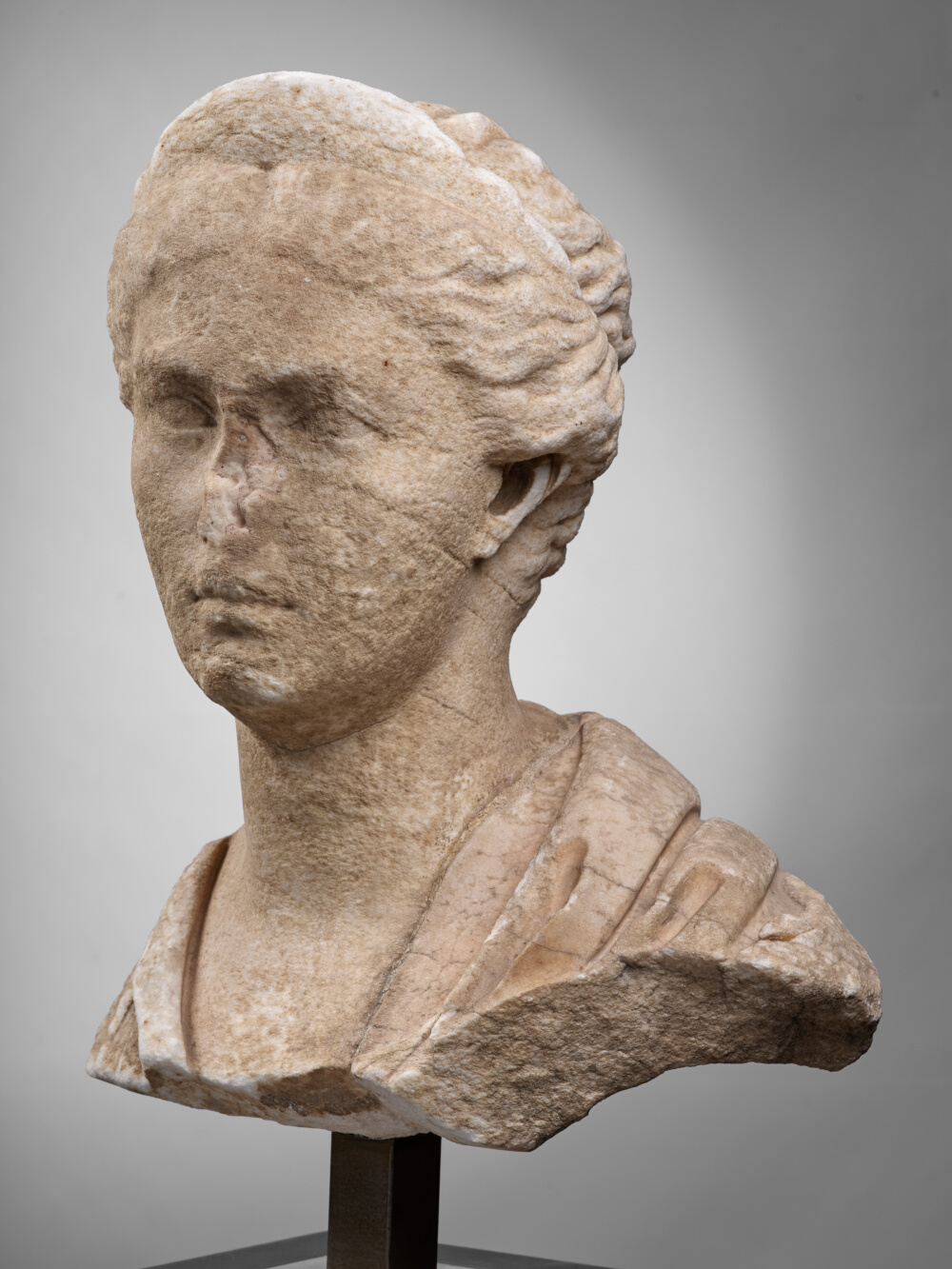
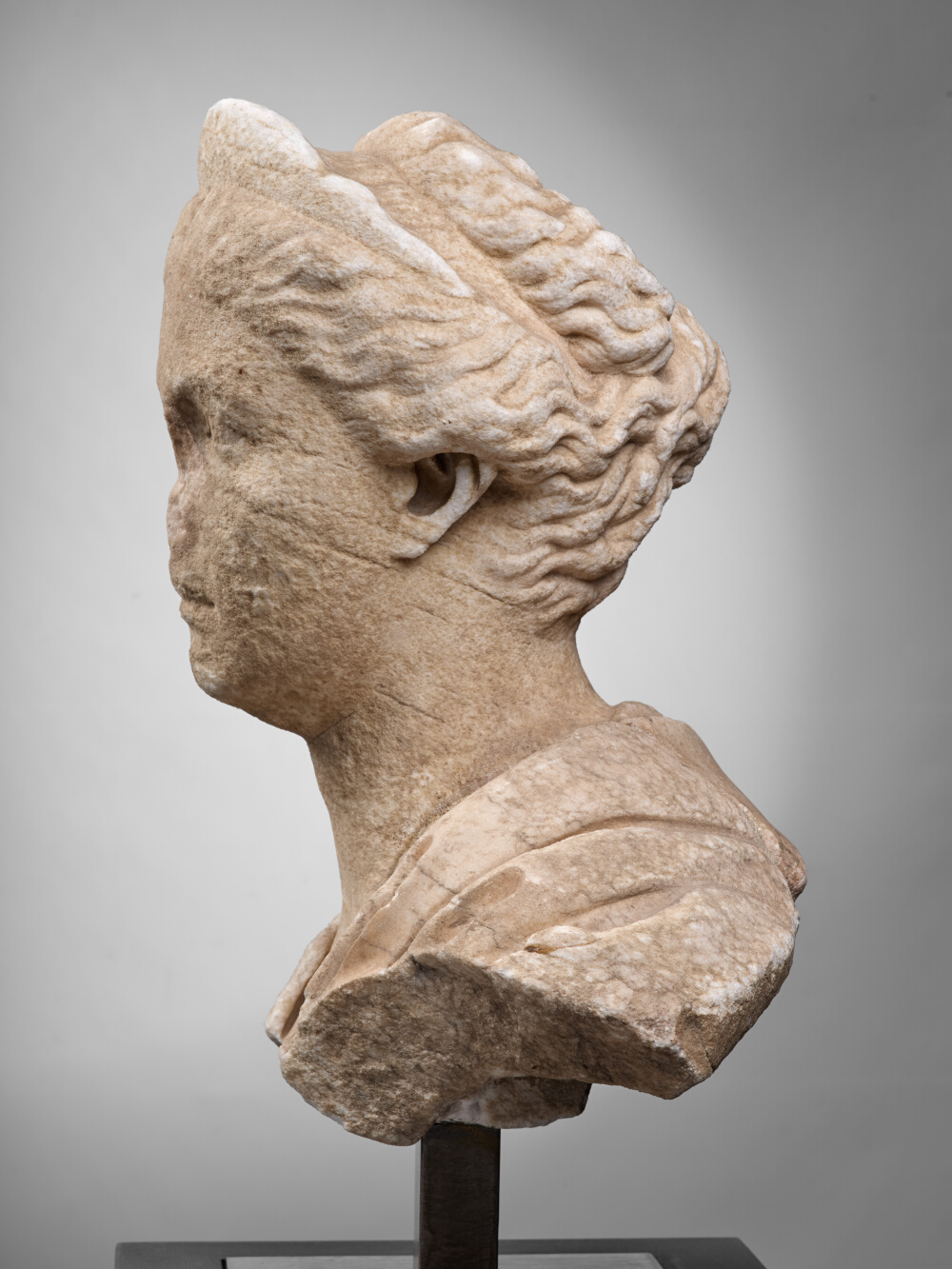
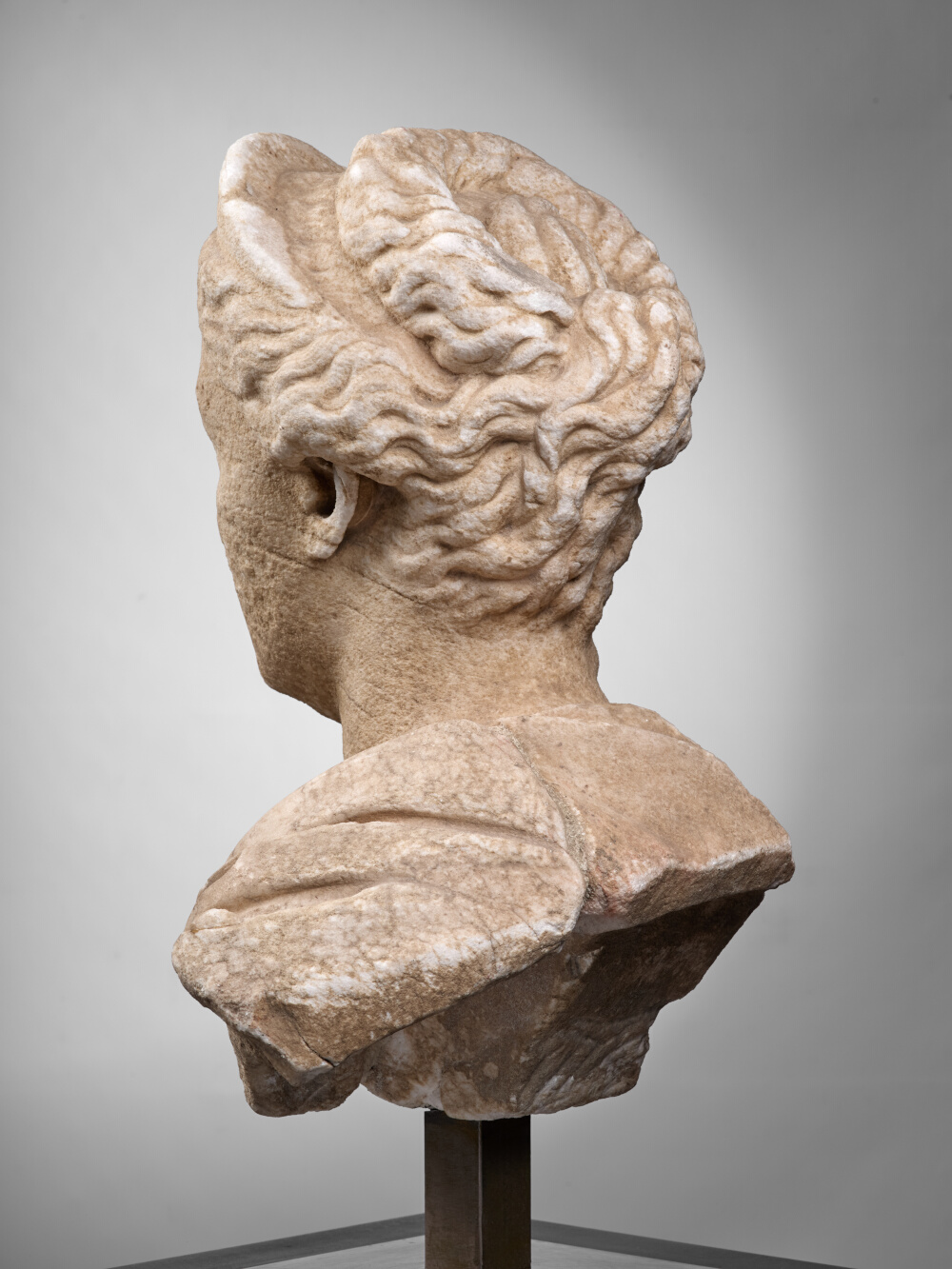
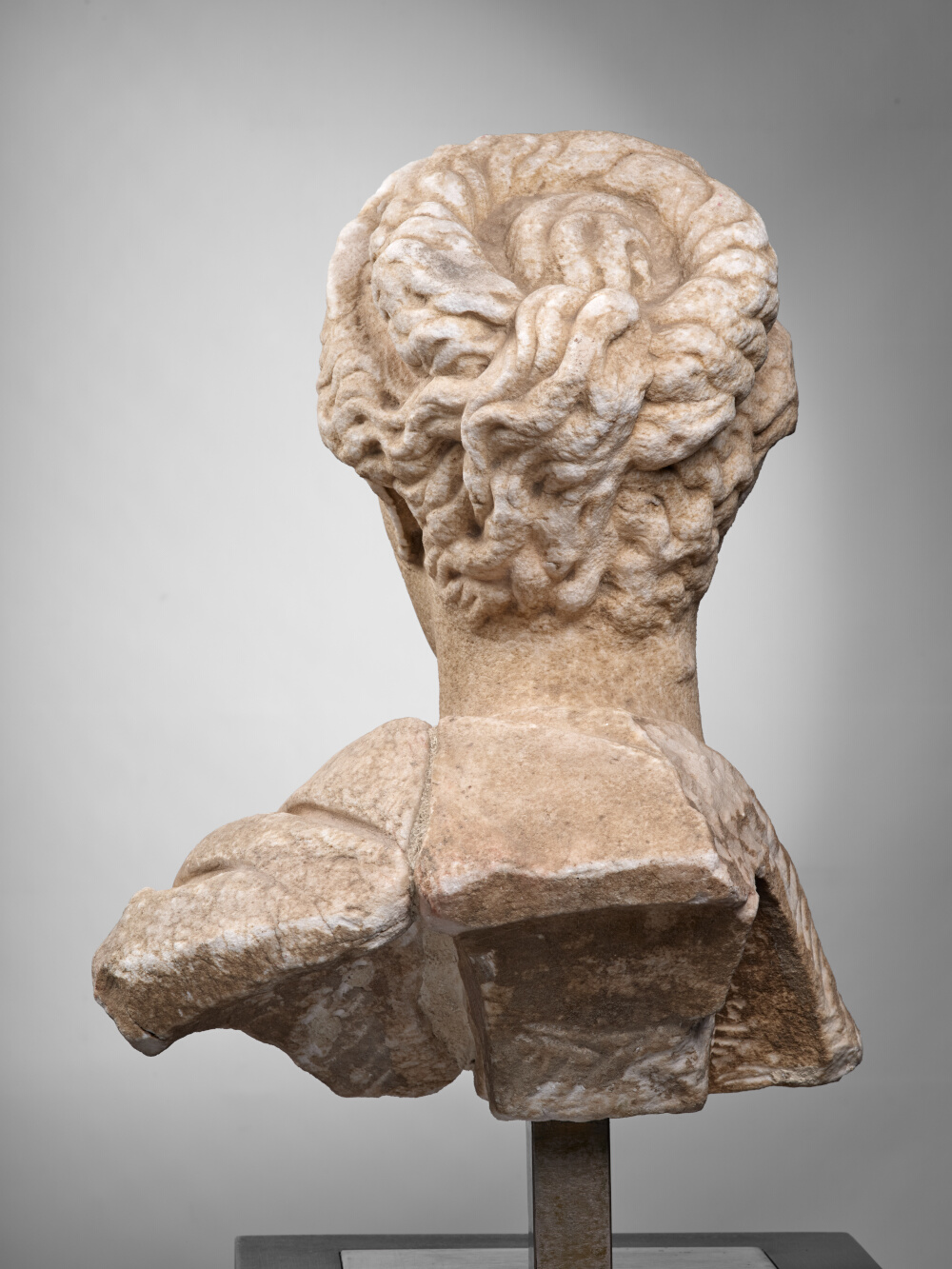
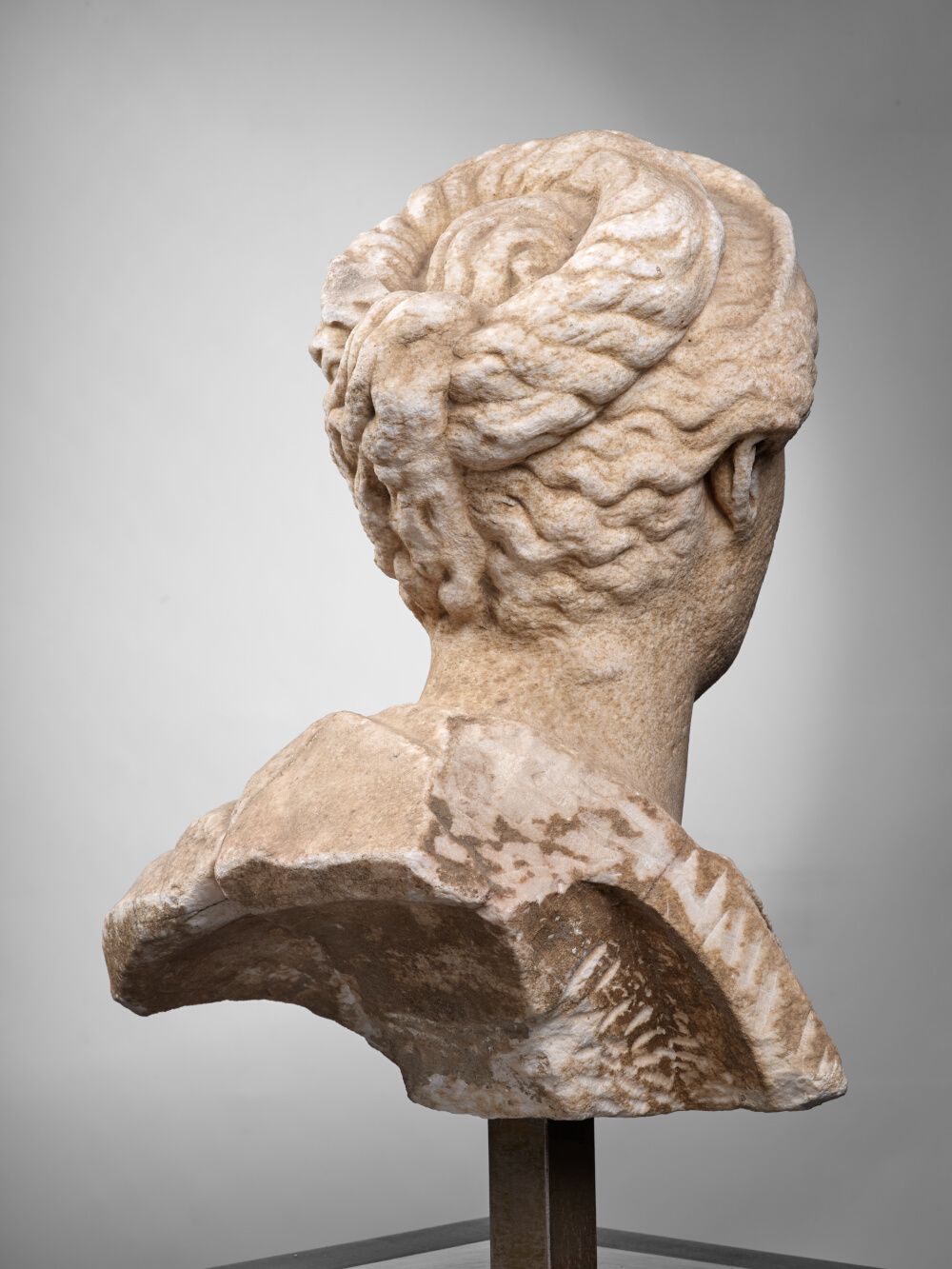
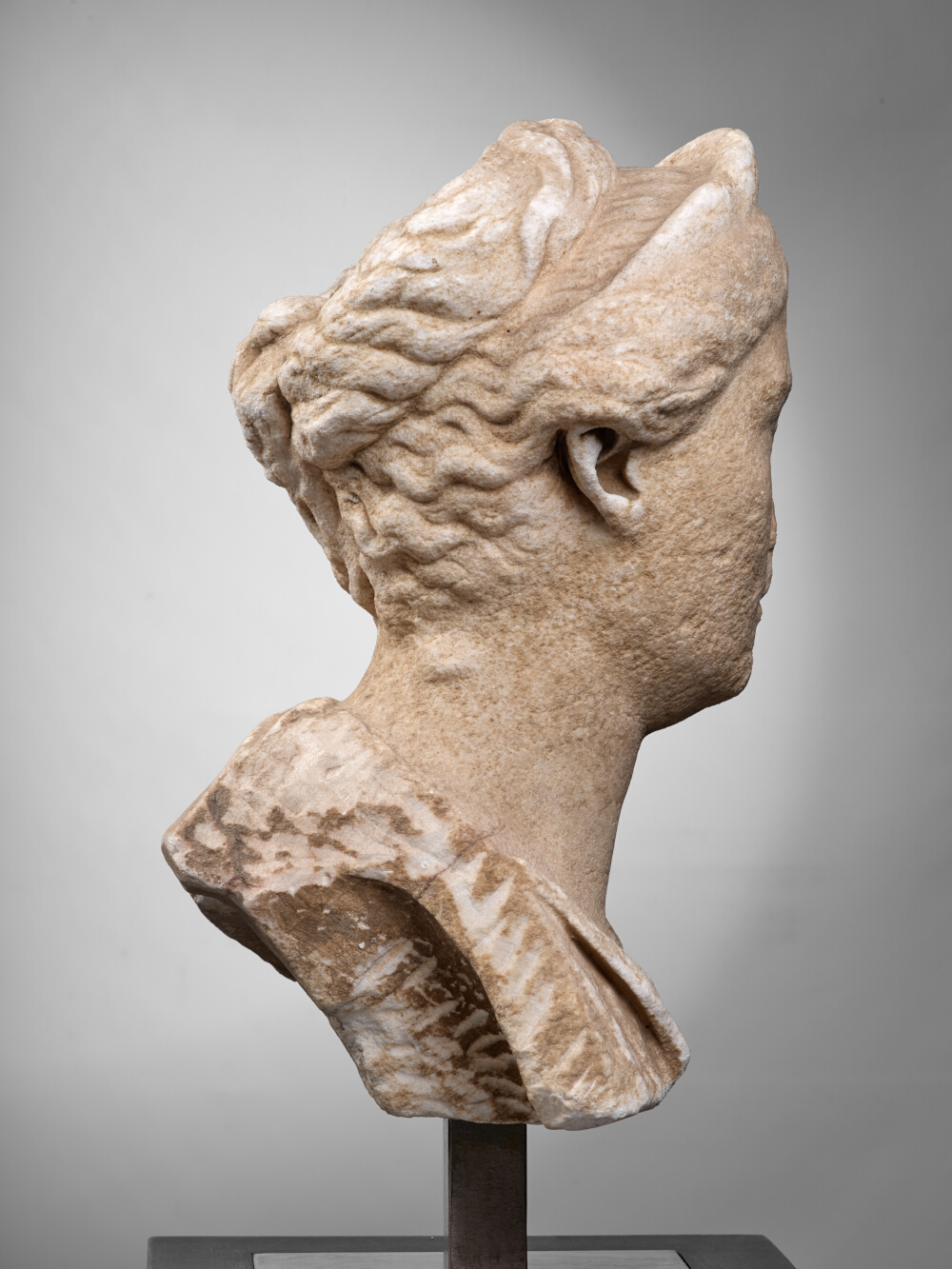
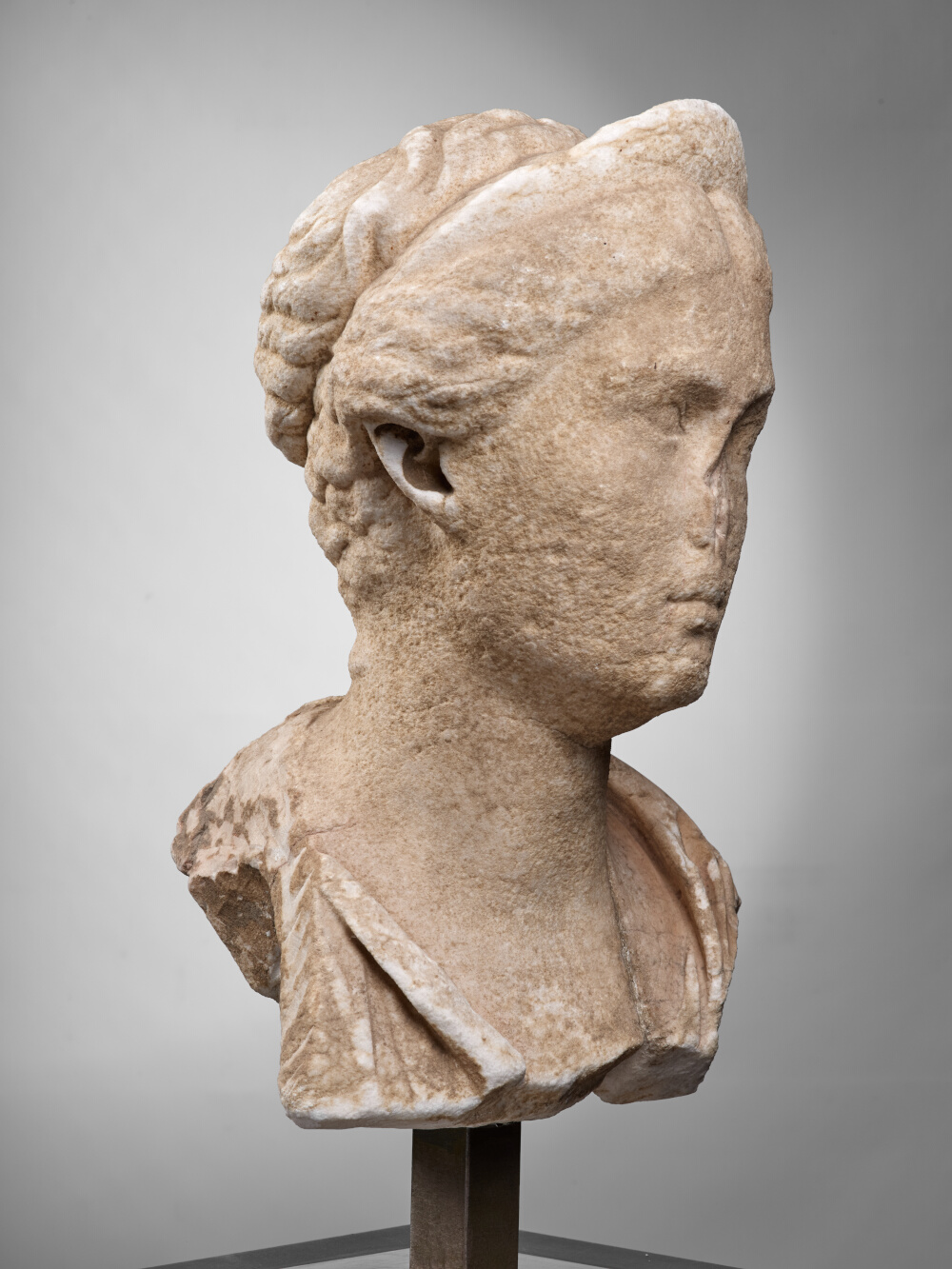
- Biographic data
- 85/87? - 136/137
- Date de création
- Between 128 and 137
- Type
- of the principal, or "Vatican, Busti 359" type
- Material
- Lychnites marble (island of Paros)
- Dimensions
- H. 44 x l. 34,5 x P. 40,5 (cm)
- Inventory number
- Ra 76
- Photo credits
- Daniel Martin
Nothing proves that this bust was found at Chiragan. Its origin therefore remains a mystery to this day. Its inclusion in this catalogue is something of a tradition on the museum’s part, as this work has always been exhibited alongside the series of portraits attributed to the villa. The importance of this portrait, together with the striking absence of female figures in this prestigious ensemble probably explain why successive curators have always included it.
Although broken at the bottom, the work depicts a woman wearing a crown, and a cloak that probably covered a tunic, now lost. In spite of the many alterations, this is clearly a portrait of Vibia Sabina, wife of Hadrian, as she was depicted in the most widespread type of iconography. Her features are regular, her lips delicately defined, and her almond-shaped eyes are shown to advantage by the pure line of her brow. On her head, she wears a tiara, the ends of which are hidden in the wavy mass of her hair. All of the above give this portrait a timeless quality akin to the representations of the goddesses of classical Greece. This idealised image thus introduces a strong break in the iconography used to depict the women of the imperial house. The hairstyle no longer includes braids (natural or postiche), or the curls and waves achieved by using a curling iron, as was the norm among the ladies of Trajan’s family, the Ulpii. On the contrary, a simple and natural look is privileged here. The high chignon differs from the « nest » (Nestfrisur) hairstyles of the official portraits of women during Trajan’s reign, as it is devoid of braids. The long wavy and twisted strands form a high, basket-shaped bun. This bust therefore belongs to the last type of official portraits of the empress, and is even, despite its poor condition, a very good replica. Some thirty copies of this type are known today, which explains the German term « Haupttypus » (main type) when referring to this series.
None of these symbols reveal the precise meaning of the last official image created during Sabina’s lifetime. Yet, they depict the empress as an ideal, and even sacred, figure. These attributes also refer to a retrospective style deeply marked by Greece, in keeping with the trends at the end of Hadrian’s reign.
According to E. Rosso 2012, Les portraits romains, 1 : Le siècle des Antonins, 1.2 (Sculptures antiques de Chiragan (Martres-Tolosane), Toulouse, p. 145-161.
Bibliography
- Alexandridis 2004 A. Alexandridis, Die Frauen des römischen Kaiserhauses : eine Untersuchung ihrer bildlichen Darstellung von Livia bis Iulia Domna, Mainz. p. 184, no 182 et fig. 3
- Balty, Cazes, Rosso 2012 J.-C. Balty, D. Cazes, E. Rosso, Les portraits romains, 1 : Le siècle des Antonins, 1.2 (Sculptures antiques de Chiragan (Martres-Tolosane), Toulouse. p. 51, fig. 50, p. 147-149, 152, 158-159, fig. 78-79, 81, 83, 86, 88-89
- Braemer 1952 F. Braemer, « Les portraits antiques trouvés à Martres-Tolosane, » Bulletin de la Société Nationale des Antiquaires de France, pp. 143–148. p. 145
- Carandini 1969 A. Carandini, Vibia Sabina : funzione politica, iconografia e il problema del classicismo adrianeo, Florence. p. 185, no 49, pl. XCIV.221
- Cazes et al. 1999 D. Cazes, E. Ugaglia, V. Geneviève, L. Mouysset, J.-C. Arramond, Q. Cazes, Le Musée Saint-Raymond : musée des Antiques de Toulouse, Toulouse-Paris. p. 124
- Du Mège 1835 A. Du Mège, Description du musée des Antiques de Toulouse, Toulouse. p. 113, no 199
- Espérandieu 1908 É. Espérandieu, Recueil général des bas-reliefs de la Gaule romaine, 2. Aquitaine, Paris.
- Fittschen, Zanker 1985 K. Fittschen, P. Zanker, Katalog der römischen Porträts in den Capitolinischen Museen und den anderen kommunalen Sammlungen der Stadt Rom, Mainz. p. 11 réplique no 21
- Joulin 1901 L. Joulin, Les établissements gallo-romains de la plaine de Martres-Tolosane, Paris. p. 335, no 278
- Rosso 2006 E. Rosso, L’image de l’empereur en Gaule romaine : portraits et inscriptions (Archéologie et histoire de l’art), Paris. p. 456-457, no 218
- Wegner, Unger 1979 M. Wegner, R. Unger, « Verzeichnis der Kaiserbildnisse von Antoninus Pius bis Commodus, » Boreas. Münstersche Beiträge zur Archäologie, 2, pp. 87–181.
- Wegner 1956 M.F.E. Wegner, Hadrian, Plotina, Marciana, Matidia, Sabina (Das römische Herrscherbild), Berlin. p. 90 et 130
- Musée Saint-Raymond 2011 Musée Saint-Raymond, L’image et le pouvoir : le siècle des Antonins. Exhibition, Musée Saint-Raymond, Toulouse, 19 November 2011 - 18 March 2012, Toulouse. p. 124
- Musée Saint-Raymond 1995 Musée Saint-Raymond, Le regard de Rome : portraits romains des musées de Mérida, Toulouse et Tarragona. Exhibition, Mérida, Museo nacional de arte romano ; Toulouse, Musée Saint-Raymond ; Tarragone, Museu nacional arqueològic de Tarragona, 1995, Toulouse. p. 42, no 4
- Musées départementaux de Loire-Atlantique 1987 Musées départementaux de Loire-Atlantique, Le trésor de Garonne : IIe siècle après Jésus-Christ : des monnaies dans la "grave" : Musée monétaire, Paris ; Musée d’histoire de Marseille ; Musée d’archéologie-Musée Thomas Dobrée, Nantes…, Nantes. no 96
To cite this notice
Capus P., "Bust of Sabina", in The sculptures of the roman villa of Chiragan, Toulouse, 2019, online <https://villachiragan.saintraymond.toulouse.fr/en/ark:/87276/a_ra_76>.